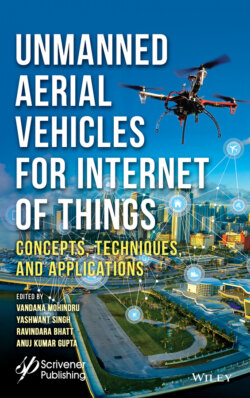Читать книгу Unmanned Aerial Vehicles for Internet of Things (IoT) - Группа авторов - Страница 18
1.3.1.3 Single-Rotor Drones
ОглавлениеSingle-rotor is indistinguishable in terms of design and structure from an actual helicopter. The single-rotor consists of one big-sized rotor with a smaller one on the tail of the drone to control the heading as shown in Figure 1.2. However, in terms of efficiency, they are much more efficient than multi-rotor drones. They usually have higher flying times & with gasoline or gas-powered engine, it can be increased significantly as shown in Figure 1.3. As a general rule of thumb, lower the count of rotors, lesser would be the spin of an object i.e. why quads are much stable than octocopters. In the same sense, a single rotor will be much more stable than Multirotor. However, they also have some complexity and operational risk. Their high cost and large-size blades often pose a risk of injuries, if mishandled and even involve accidents. On the other hand, multi-rotor having small blades is unlikely to cause an accident or injury although a scar is likely is mishandled but that can also be avoided with ducts which also have an extra-added advantage. Single-rotor drones also require much training and skill to fly them in the air properly.
Figure 1.2 Single rotor drone [35].
Figure 1.3 Types of multi-rotor drones [34].
